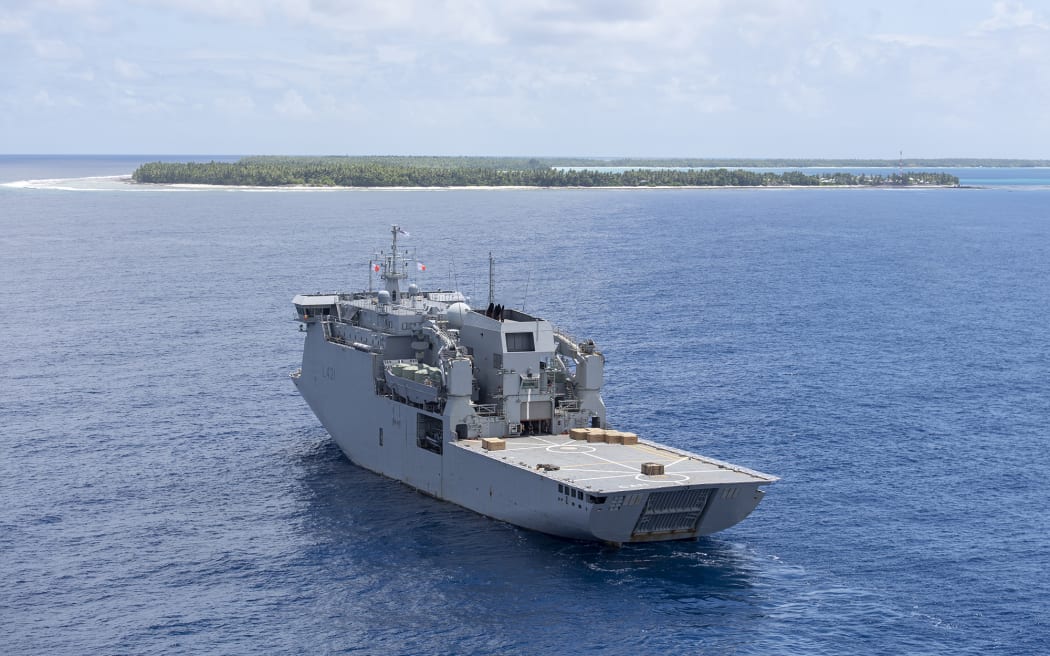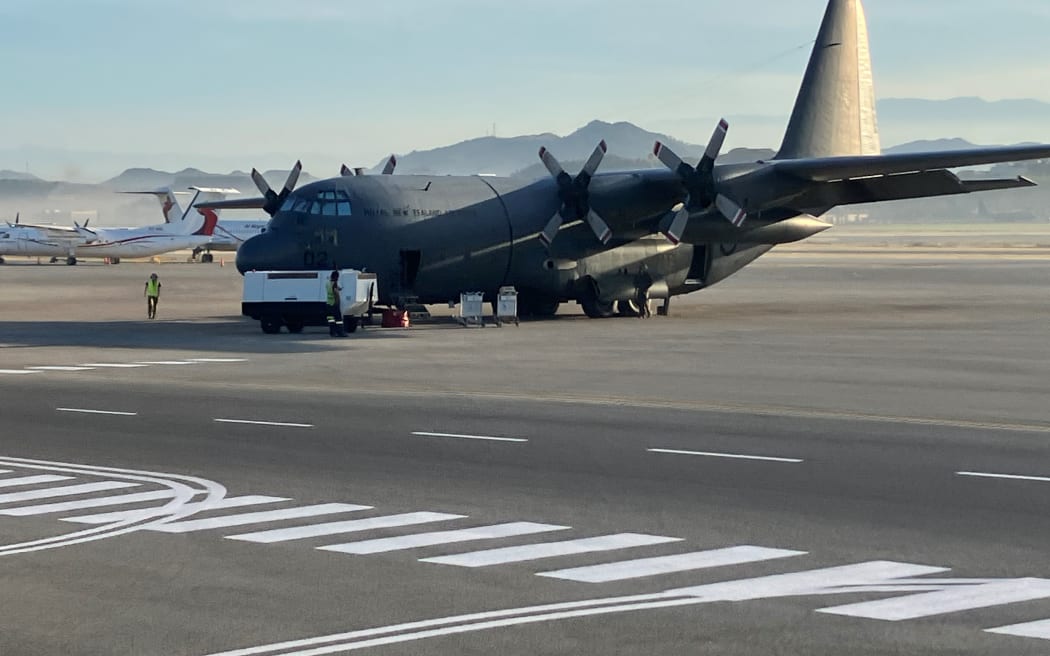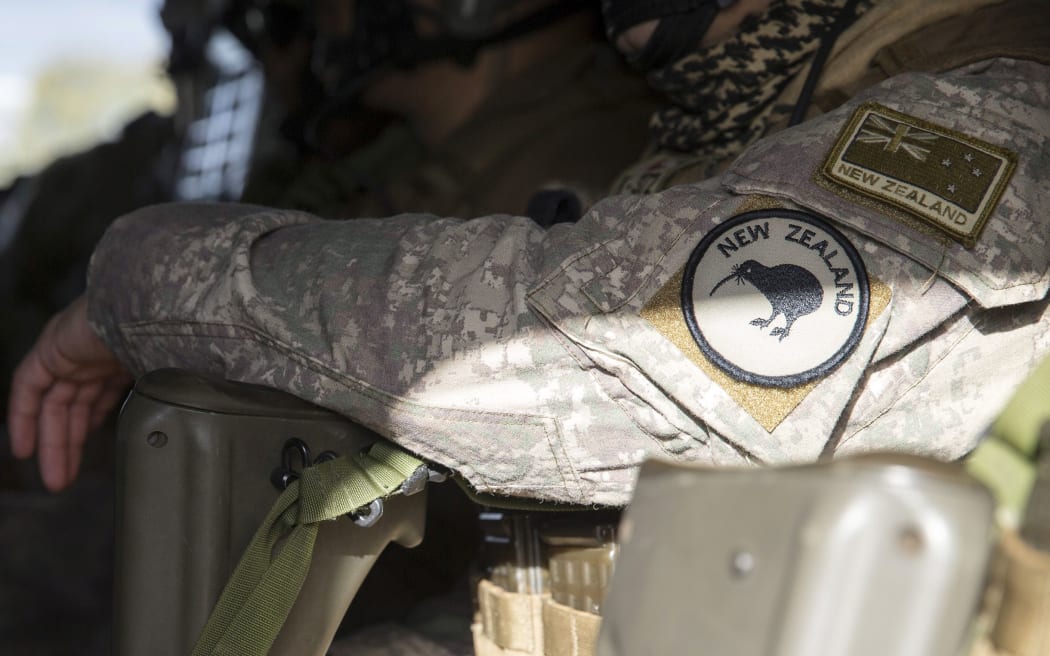The Defence Force is again warning the government it is in a dire state, describing it as vulnerable and the Navy as extremely fragile.
Staff have left in droves and it was now looking at making it easier to meet the minimum entry requirements for education, health and fitness.
The exodus of people has now slowed since they were forced to work in Managed Isolation Hotels but there were still huge problems.
The Defence Force used 'retention payments' to personnel in early 2023 to try and stem the flow of people leaving, who were largely concerned about the low pay rates.
In documents from May, it said those payments appeared to be working.
They were wrong. In the December 2023 Capability and Readiness Update it said "attrition remains unsustainable high".
It told the government the number of people leaving each month had reduced slightly, but they expected another hike over the Christmas period - creating larger gaps in what it said was a "hollow" supply of personnel.
In December the Air Commodore told the government the scarcity of people from "critical trades" was making it impossible to meet operational demands, while introducing/upgrading new technologies, maintain existing infrastructures and assets and work to recruit more people at the same time.
It was being forced to pick what it could and could not manage with the number of people across the forces.
Another of the key concerns was not just the ageing equipment but the qualified people to fix it.
NZDF said the old equipment created additional cost pressures on top of a problematic global supply chain and staffing shortages meant the fixing things took much longer than it used to.

Navy - extremely fragile
The documents show the Navy was working hard to stay afloat.
The capability and readiness update said it had significant workforce shortages particularly within "specialist technical trades".
The loss of these personnel meant ships were having to be tied up and taken out of use.
The HMNZS Canterbury was the only one that could take a helicopter and was tied up for months until 1 March 2024.
NZDF said the Seasprite Helicopter fleet was a "major concern" because some of the key parts needed for maintenance and repairs were hard to get or becoming obsolete.
Army - 'fragile'
The NZDF said failure to meet recruitment targets left the army fragile, with significant gaps in the workforce.
One of the key problems was the exodus of experienced staff.
It warned the government the remaining experienced personnel was at unsustainable levels.
Some specialist areas including logistics, medical, military policing and signals (computers and radios) were at minimal levels.
The army was also struggling to have enough cover for their emergency fire crews across the locations.
Staff were at 66 percent of what they needed and continued to fall. It said the numbers would keep dropping over 2024 and that would limit where emergency fire crews would be able to cover.
It said the army was also "undergoing an internal consolidation" to reduce large holes in the units. This meant that four partially staffed units might merge into three.
The Defence Force said consolidation across units would provide better supervision, safety and training outcomes, but would limit the land-based responses.

Airforce - some trades at less than 50 percent
The documents list the Airforce's vulnerabilities within Fixed Wing Transport - including the beleaguered Boeing 757 and Hercules aircraft.
The availability of the Boeing 757, which failed to take the prime minister to bilateral meetings last month, continued to be at risk because it can be hard to get spare parts for the defects found during servicing.
Trained maintenance staffing for these aircraft was only at 80 percent of what they should have, according to the report.
Avionics trade supervisors at 66 percent of what they should have and aircraft trade supervisors were sitting at 85 percent.
Trained P-8A Poseidon maintenance staff gaps were being filled by civilians where they could to keep them running.
The Defence Force said helicopter maintenance staffing was also terrible - the NH90 Aircraft trade supervisors were critically low with only half the staff they need.
The limited numbers meant maintenance which would have been completed in a day was now done over consecutive days.
NZDF 'Significant deficiencies'
The documents revealed that while the forces were dealing with the huge gaps in personnel, it was worried about the remaining staff who were under persistent pressure and "shouldering significant burden" to ensure major equipment and platforms remained in action.
The Defence Force said more people were taking sick leave, staff were putting off taking holidays, leaving them with a higher annual leave liability, and more people were asking for a payrise.
It told the government their budget also hamstrung them because they could not afford to use civilian staff to temporarily fill the gaps.
It described the NZDF's reduced workforce and loss of experience made it "systemically fragile".
The report said in a bid to improve recruitment it would look to re-enlist qualified and experienced personnel who have previously served, and speed up the recruitment of the future workforce.
NZDF said it was also considering making it easier to meet the "minimum entry requirements" for education, medical and fitness, to ensure that more candidates could progress through.


